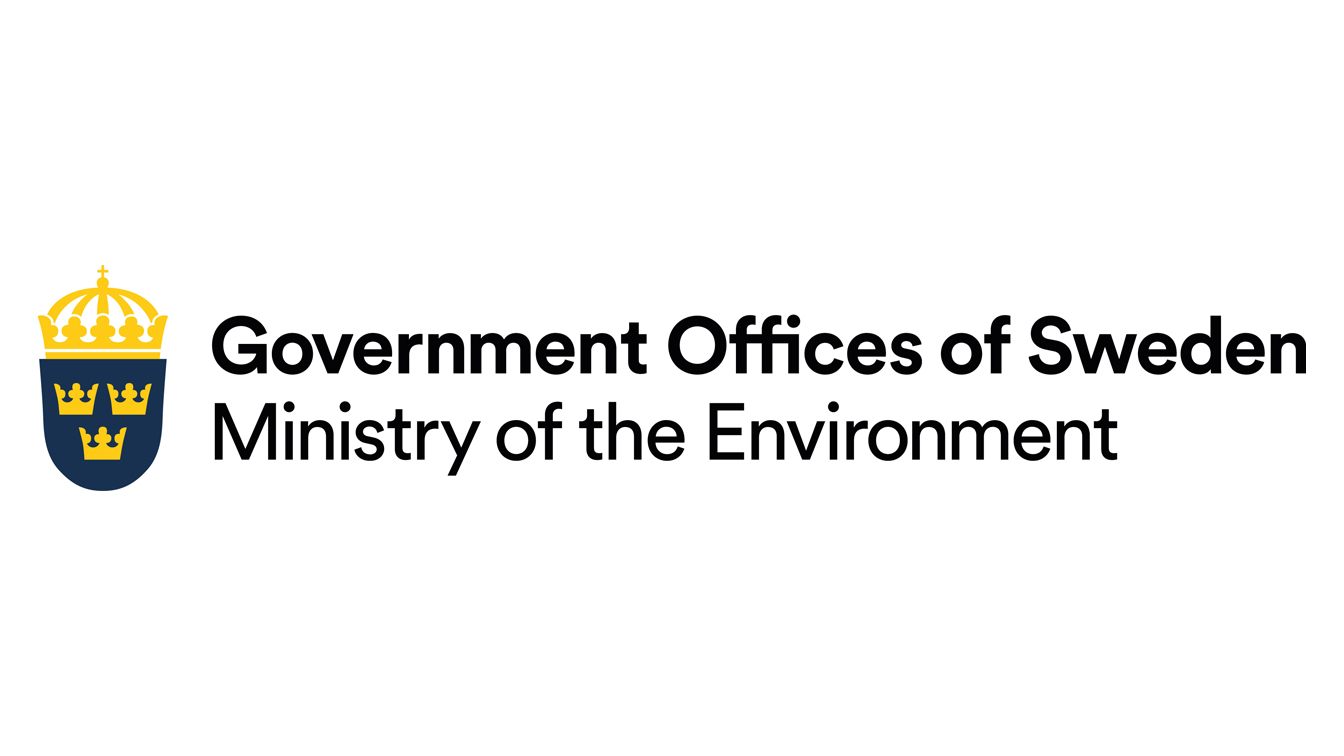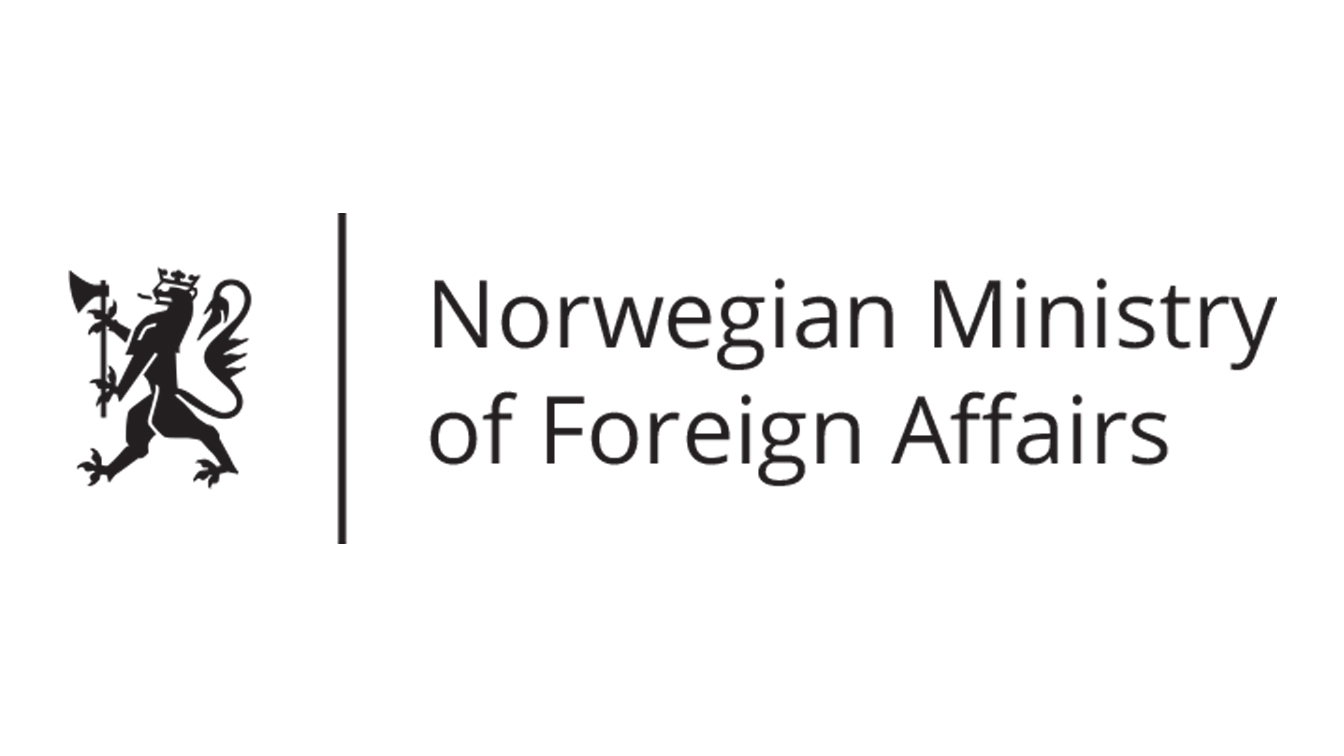The Legacies of the Stockholm Conference
Still Only One Earth: Lessons from 50 years of UN sustainable development policy
Fifty years after the Stockholm Conference ushered in modern environmental diplomacy, we still face a triple planetary crisis of climate change, nature and biodiversity loss, and pollution. Multilateralism is key to solving today’s global environmental challenges, but it may not be enough to avert catastrophic damage unless governments and all stakeholders rise to the occasion. (Download PDF) (See all policy briefs) (Subscribe to ENB)
Fifty years ago, governments convened in Stockholm, Sweden, and formally acknowledged the link between the environment and development, placing it at the centre of the international agenda. Key ideas and institutions—such as “sustainable development” and the United Nations Environment Programme (UNEP)—exist today because of the work sparked by the 1972 UN Conference on the Human Environment. The Stockholm Conference demonstrated that intergovernmental cooperation is possible.
Many environmental and sustainable development issues were laid out in the Stockholm Declaration and Action Plan. The Stockholm Conference took the first step to recognize these problems, raise awareness of the challenges that had to be addressed, and set the world on a path toward a more environmentally sustainable existence. Along this path, governments negotiated treaties, adopted action plans and programmes, collected environmental data, created scientific bodies, convened global conferences, and established environment ministries.
The environmental crisis points up the need to review our activities, not just in relation to the particular purpose and interest they are designed to serve, but in their overall impact on the whole system of interacting relationships, which determines the quality of human life.
Yet 50 years later, climate change, biodiversity loss, and pollution are at levels that couldn’t have been foreseen in 1972. While the environment is no longer considered a “fringe” issue as it was in the 1960s and there is greater awareness of the human impact on the environment, progress has been uneven. The nature of human activities has not shifted sufficiently to reflect the limits of what our natural environment can sustain.
But the world actually has the tools it needs to confront the greatest environmental and development issues of the 21st century. And those tools had their start in Stockholm. This final brief in our series, “Still Only One Earth: Lessons from 50 years of UN sustainable development policy,” examines the legacies of Stockholm and the challenges that lie ahead.
Global Cooperation for Interlinked Challenges
Perhaps the most important legacy of the Stockholm Conference is intergovernmental cooperation. Although the Stockholm Conference came amid Cold War tensions, East and West joined together to support Sweden’s initiative to convene the conference.
A second, connected legacy is the recognition that global challenges are interlinked. In 1972, developing countries were wary of the environmental concerns of the North. They wanted to focus on issues of economic and social development and poverty. As Indian Prime Minister Indira Gandhi famously asked those gathered in Stockholm, “Are not poverty and need the greatest polluters?” From the focus on environment and development in Stockholm, to the evolution of the three pillars of sustainable development—economic and social development and environmental protection—to the 17 interlinked Sustainable Development Goals, the past 50 years have confirmed the importance of intergovernmental collaboration to address deeply intertwined, global challenges.
Charting the Path
With the recognition that many environmental problems transcend national boundaries and international cooperation is necessary, the Stockholm Conference catalyzed a new era of multilateral environmental cooperation and treaty-making. Stockholm triggered subsequent mega-conferences—including the 1992 UN Conference on Environment and Development, also known as the Earth Summit. And numerous multilateral environmental agreements (MEAs) were born out of these conferences.
The MEAs of the early 1970s, including the 1971 Ramsar Convention on Wetlands, the 1973 Convention on International Trade on Endangered Species of Wild Fauna and Flora (CITES), the 1972 Convention on the Prevention of Marine Pollution by Dumping of Wastes and Other Matters (London Convention), and the 1973/78 International Convention for the Prevention of Pollution from Ships (MARPOL), represented some of the first global attempts to address both conservation of species and habitats as well as protection from ocean pollution.
Following the Stockholm Conference, UNEP took the lead in developing numerous international environmental treaties, including the 1979 Convention of Migratory Species of Wild Animals, the 1985 Vienna Convention and 1987 Montreal Protocol on Substances that Deplete the Ozone Layer, the 1989 Basel Convention on the Control of Transboundary Movements of Hazardous Wastes and Their Disposal, and the Regional Seas Conventions and Action Plans.
In 1992, the Earth Summit in Rio de Janeiro resulted in a new set of MEAs, including the three “Rio Conventions”: the 1992 UN Framework Convention on Climate Change (UNFCCC), the 1992 Convention on Biological Diversity (CBD), and the 1994 UN Convention to Combat Desertification (UNCCD). Rio also set the stage for the negotiation of the 1995 UN Fish Stocks Agreement, the 1998 Rotterdam Convention on the Prior Informed Consent Procedure for Certain Hazardous Chemicals and Pesticides in International Trade, the 2001 Stockholm Convention on Persistent Organic Pollutants, and the 2001 International Treaty on Plant Genetic Resources for Food and Agriculture. The Minamata Convention on Mercury followed in 2013.
Twenty years after the Earth Summit, and 40 years after Stockholm, governments gathered again in Rio de Janeiro for the UN Conference on Sustainable Development (Rio+20). This conference set in motion the process to negotiate the 2030 Agenda for Sustainable Development and its 17 Sustainable Development Goals (SDGs), which were adopted in 2015. The SDGs have taken the concept of sustainable development that emerged from Stockholm and articulated it in the most measurable and inspiring framework to date.
Learning about the Planet
The Stockholm Conference also recognized the need for a strong scientific foundation for global environmental policymaking. With that in mind, one of UNEP’s key mandates is to monitor, track, and record environmental data. At the inaugural meeting of the UNEP Governing Council in 1973, governments established Earthwatch, a programme to coordinate, harmonize, and integrate observation, reporting, and assessment activities across the UN system (Ivanova, 2021, p.72). While financial constraints prevented Earthwatch from achieving its potential, UNEP’s focus on monitoring the environment has evolved from tracking indicators to synthesizing data into environmental assessment reports, including the influential Global Environment Outlook reports and the Emissions Gap Reports.
UNEP’s convening power and scientific research also spur countries to engage, act boldly, and advance the global environmental agenda. UNEP contributed to the establishment of two major science-policy bodies: the Intergovernmental Panel on Climate Change (IPCC) and the Intergovernmental Science-Policy Platform on Biodiversity and Ecosystem Services (IPBES). This mandate continues to grow; the 2022 session of the UN Environment Assembly agreed to establish a new science-policy panel on chemicals (UNEA, 2022, Annex I). Since its birth in Stockholm, UNEP has become the arena where the policy and science communities can meet and trigger policy responses.
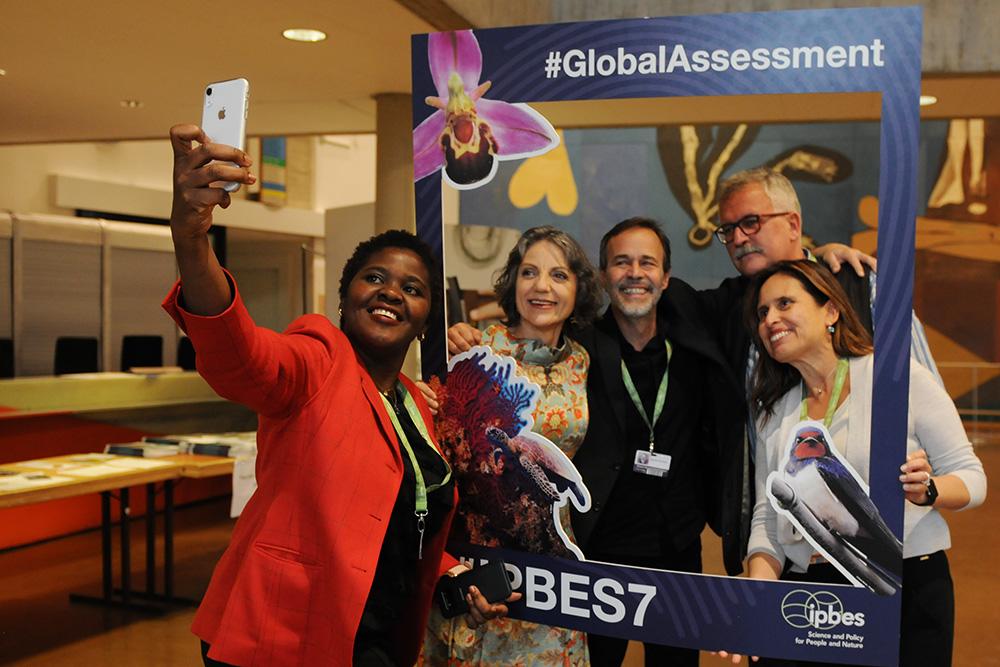
Establishing Key Principles
The Stockholm Declaration was also the starting point for the introduction of concepts and principles into international law that previously were only used in national legislation. Three of these international legal principles have come to underpin environmental discourse and law-making.
The precautionary principle is one of the most prominent and possibly controversial of these principles. While it existed in national legal frameworks as early as 1969, the Vienna Convention for the Protection of the Ozone Layer was the first MEA that codified precautionary measures in 1985. This recognition was extended in 1987 when governments pledged in the preamble to the Montreal Protocol on Substances that Deplete the Ozone Layer their determination to protect the ozone layer by “taking precautionary measures to control equitably total global emissions of substances that deplete it.” Following the adoption of Principle 15 of the 1992 Rio Declaration, which was also the first international instrument to include a definition of the precautionary principle, many multilateral and regional agreements, as well as national laws, now include precautionary action in some form.
The second principle is additionality. Principle 12 of the Stockholm Declaration recognized additional international technical and financial resources should be made available to developing countries “to preserve and improve the environment.” This principle was expanded in the Rio Declaration, which recognizes developed and developing countries have “common but differentiated responsibilities” due to their different contributions to global environmental degradation and in view of “the technologies and financial resources they command” (Principle 7). Rio Principle 9 provides for scientific and technological knowledge exchange and for enhanced development, adaptation, diffusion, and transfer of technologies.
Finally, the polluter-pays principle (PPP), which had a long history of use at the national level, was incorporated in Principle 22 of the Stockholm Declaration. The PPP requires those who produce pollution to bear the costs of managing it to prevent damage to human health and the environment. Twenty years later, the PPP was included broadly in Principle 16 of the Rio Declaration and is contained in numerous legally binding and non-legally binding international agreements that form a backbone of international environmental policy.
Governments Cannot Solve Environmental Problems Alone
Despite these advances in international environmental law, science, assessments, and principles, implementation is still lagging. The true challenge of global environmental action may lie in designing treaties that can adapt over time to evolving science and changing levels of socio-economic development, and recognize the importance of stakeholder engagement. Multilateralism may be part of the answer, but it may also be insufficient to avert catastrophic environmental damage unless governments and all stakeholders rise to the occasion.
The Stockholm Conference opened the door to broader participation in the international sustainable development arena. By welcoming non-governmental organizations (NGOs), Indigenous Peoples, the scientific community, and the private sector—groups that previously did not have great access to the UN system—Stockholm increased transparency and inclusivity.
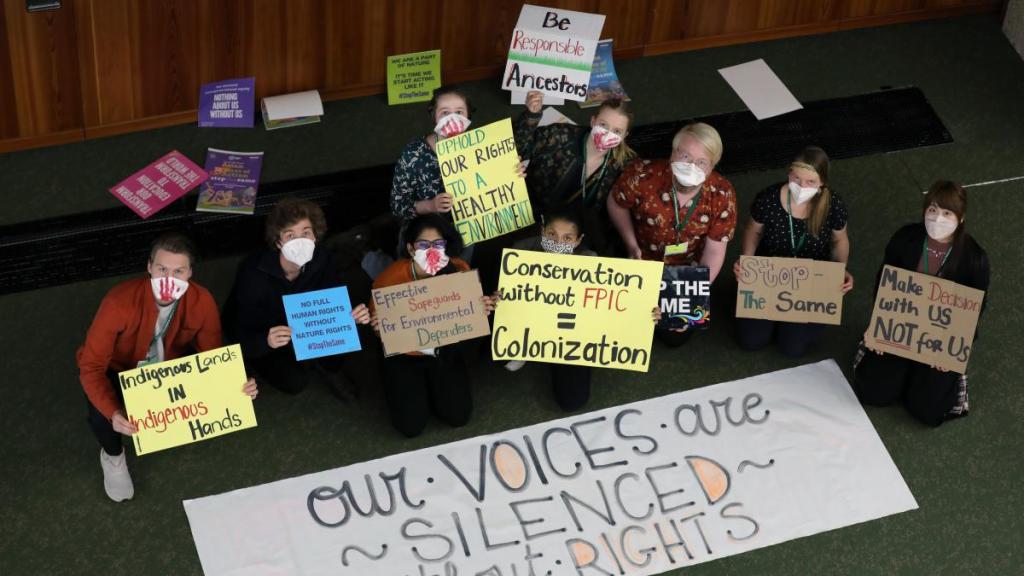
Recognizing the growing civil society interest in environmental issues, the Stockholm Conference established the Environmental Forum (Engfeldt, 2009, p.50). This became a model for subsequent UN sustainable development conferences. In fact, twenty years later at the Earth Summit in Rio, the parallel NGO forum—the Global Forum—attracted an estimated 20,000 environmentalists and representatives of a wide spectrum of groups (Engfeldt, 2009, p.187).
This led to the growing recognition that governments cannot solve environmental problems alone. The Earth Summit called for broad public participation in decision-making. Chapters 24-32 of Agenda 21 formalized nine sectors of society as the main channels where participation was needed to implement activities related to sustainable development. These “Major Groups” include women, children and youth, Indigenous Peoples, NGOs, local authorities, workers and trade unions, business and industry, the scientific and technological community, and farmers.
One of the fundamental prerequisites for the achievement of sustainable development is broad public participation in decision-making.
Two decades after the Earth Summit, the importance of effectively engaging these nine sectors was reaffirmed by the UN Conference on Sustainable Development (Rio+20). Furthermore, governments and the UN opened up to other stakeholders, including local communities, volunteer groups and foundations, migrants and families, older persons, persons with disabilities, and the lesbian, gay, bisexual, and transgender (LGBT) community. By welcoming nonstate stakeholders to the UN, the Stockholm Conference started to expand the nature of the sustainable development discourse.
For example, Grand Chief George Manuel from the National Indian Brotherhood was part of the Canadian delegation to the Stockholm Conference (Crossen, 2017). But the Stockholm Declaration and Action Plan did not acknowledge Indigenous Peoples. Twenty years later, Indigenous Peoples played a more prominent role in the preparations for the 1992 Earth Summit, which explicitly called for the involvement of Indigenous Peoples and their communities in resource management and conservation strategies and to support sustainable development strategies. Indigenous Peoples also participate in global environmental governance of biodiversity, climate change, persistent organic pollutants, and the Arctic. However, there is still a need to ensure Indigenous Peoples’ worldviews and knowledge are genuinely integrated into decision-making processes.
The Stockholm Conference did not address women or gender issues either. However, twenty years later, the women’s agenda and the environmental agenda came together at the international level during the preparations for the Earth Summit. This discussion led to Principle 20 of the Rio Declaration: “Women have a vital role in environmental management and development. Their full participation is therefore essential to achieve sustainable development.” It is now widely recognized that addressing gender inequalities—including access to and control over natural resources—accelerates the impact of sustainable development policies. However, much work remains to enable women’s participation and decision-making at all levels.
The private sector, including corporations, investors, industry interest groups, and philanthropists, has engaged in sustainability policy and practice in three main ways: actively blocking action on environmental and social issues; partnering with governments and other stakeholders to advance sustainable development; and working to transform the systems that have led to climate change and unsustainability, particularly growth-based economic models. Many now recognize that bringing in industry and the private sector is essential to responding to environmental challenges and to scaling up implementation of MEAs and the SDGs, but clear policy guidance is still needed.
Sustainable Development Challenges
The Stockholm Conference also identified a theme that has since been at the centre of international environmental discourse: sustainable development. The debates held in 1972 foreshadowed discussions ever since: Who bears the blame for pollution? How can we lift people out of poverty while conserving ecosystems? What is the relationship between human and environmental health? Can economic development be sustainable? Thus, another legacy of the 1972 Conference is the enduring search for solutions to reconcile economic development and environmental management, which culminated in 2015 with the 2030 Agenda for Sustainable Development and its 17 SDGs, the Paris Agreement on climate change, and the Sendai Framework for Disaster Risk Reduction.
At the heart of the SDGs—and the Millennium Development Goals before them—is poverty eradication, which is necessary to achieve sustainable development. Work to define poverty and to bring together the environment and poverty eradication agendas has been aided by efforts to holistically measure and communicate changes in poverty levels, environmental impacts, and the relationships between the two. As a result, millions were lifted out of poverty over the past 50 years, but the once-in-a-generation catastrophe of the COVID-19 pandemic reversed progress.
COVID-19 also magnified the inequalities in healthcare systems and demonstrated that existing environmental policies do not effectively support global health and sustainable development objectives. The pandemic exacerbated these negative trends and magnified underlying systemic problems, including social and economic inequality and weak healthcare systems.
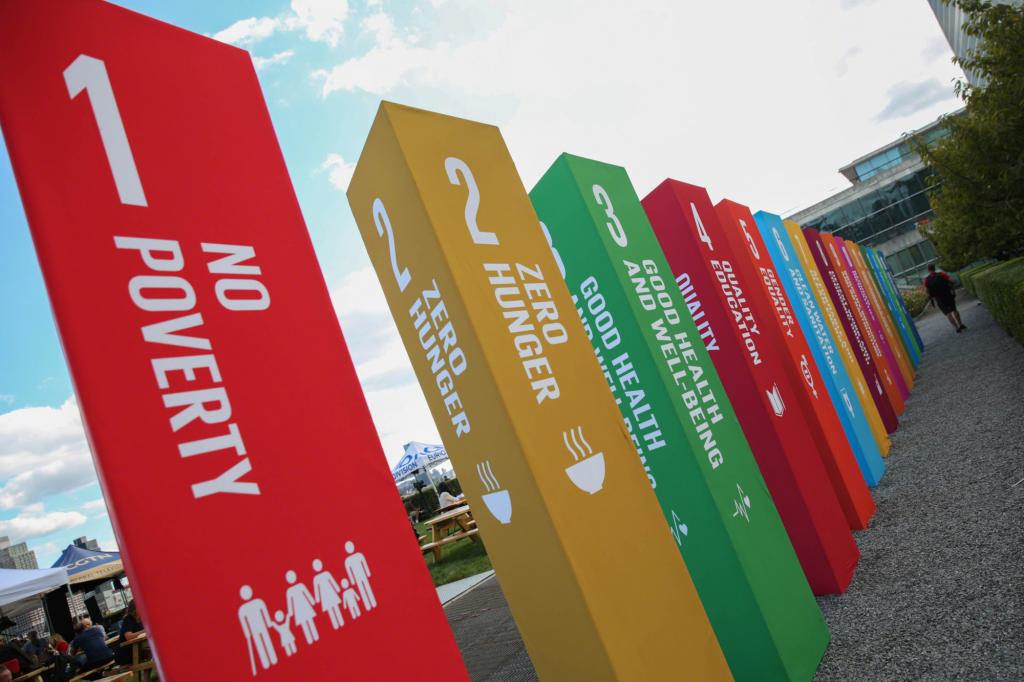
The Stockholm Conference identified water and sanitation as necessities for a decent life, along with food, clothing, shelter, and education. The Stockholm Action Plan’s 109 recommendations included calls for water supply, sewerage, and waste disposal systems adapted to local conditions. Yet 50 years later, ensuring water and sanitation for all remains one of the world’s biggest challenges.
In 1972, 37% of the world’s population lived in urban areas. Today, over 56% of the world’s population can be found in cities and this is expected to reach 68% by 2050 (UNDESA, 2019). Increasing urbanization contributes to biodiversity loss, increased material consumption, and climate change. Many cities recognize these challenges and have become sustainable development leaders as they experiment with urban agriculture, sustainable transport, and fostering decarbonization across the energy, building, waste, and transport sectors, while improving quality of life.
The challenges of sustainable economic development have not abated over the past 50 years. Whether we are talking about the need for more sustainable mining, fishing, forests, or resource consumption in general, the need to balance economic development and environmental conservation is as important as ever. The Stockholm Declaration not only addressed resource depletion but also benefit-sharing, emphasizing that we must ensure natural resource use not only benefits the few, but the many—both within and across countries. It also speaks to the principle of inter-generational equity, ensuring today’s resource use does not compromise the availability of natural resources for future generations.
The Path Forward
What will these future generations say of the legacy of Stockholm? Fifty years after Stockholm, we face a triple planetary crisis of climate change, nature and biodiversity loss, and pollution that could not have been imagined in 1972. To move forward, everyone must work together to find ways to transform our societies and economies.
We are already seeing the impacts of a warming world on biodiversity, coral reefs, small island states, natural disasters, and human health. The window to transition to a sustainable future is open but closing fast.
Climate change, nature and biodiversity loss, and pollution and waste are threatening to pull the very rug out from under the SDGs—and with it whip away our aspirations to end hunger and poverty, deliver peace and equity, and live in harmony with the natural world.
Growing pressure for new rules and agreements that meaningfully consider sustainable development and trade—including by eliminating harmful energy, agricultural and fisheries subsidies—is challenging multilateralism, especially at the World Trade Organization (Hopewell, 2016). Plastics pollution, the illegal wildlife trade, and new forms of biotechnology—issues that were not even on the radar in 1972—are putting multilateral cooperation to the test.
The Stockholm Conference began a global conversation about the importance of environmental issues, along with their interconnections with economic and social development. Stockholm will always be remembered as the moment these challenges were brought together. Perhaps the best legacy of Stockholm will be accelerated implementation of the treaties and agreements to address the triple planetary crisis. These agreements include the 2030 Agenda, the Paris Agreement on climate change, the global biodiversity framework, and the Sendai Framework, along with all the other MEAs that grew out of the Stockholm Conference.
Now is the time to continue to connect and better understand scientific data and to involve everyone on the planet—not just governments—in the decision-making processes of our collective future. Now is the time to remember and live up to the promise of Stockholm.
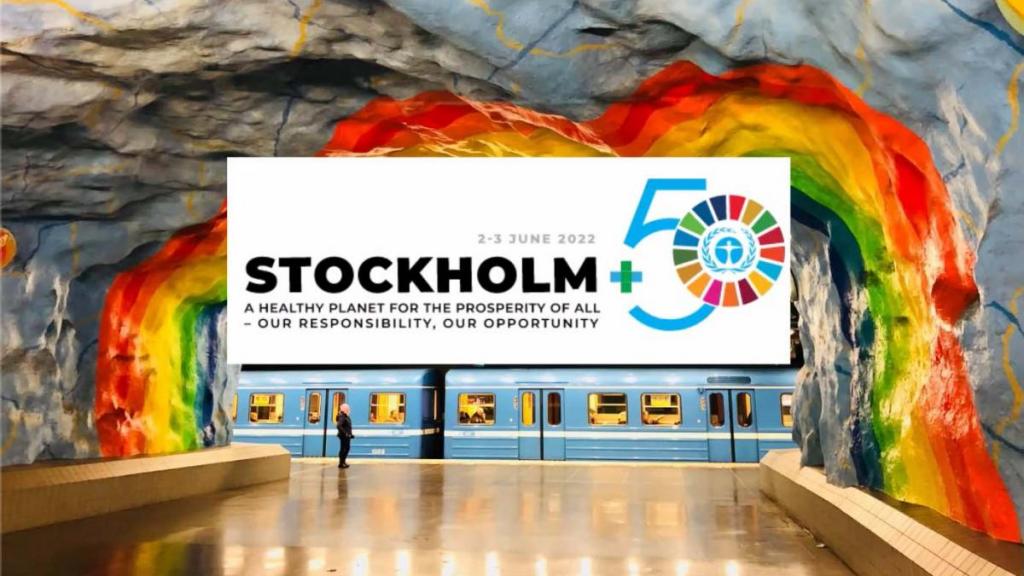
Works Consulted
Crossen, J. (2017). Another wave of anticolonialism: The origins of indigenous internationalism. Canadian Journal of History 52(3), 533-559. doi.org/10.3138/cjh.ach.52.3.06
Engfeldt, L. (2009). From Stockholm to Johannesburg and beyond. Swedish Ministry for Foreign Affairs.
Hopewell, K. (2016). Breaking the WTO: How emerging powers disrupted the neoliberal project. Stanford University Press.
Ivanova, M. (2021). The untold story of the world’s leading environmental institution: UNEP at fifty. MIT Press.
United Nations Department of Economic and Social Affairs. (2019). World population prospects 2019. Population Division. esa.un.org/unpd/wpp/
United Nations Environment Assembly of the United Nations Environment Programme. (2022). “Proceedings of the United Nations Environment Assembly at its resumed fifth session” UNEP/EA.5/28. unep.org/environmentassembly/unea-5.2/proceedings-report-ministerial-declaration-resolutions-and-decisions-unea-5.2
Additional downloads
You might also be interested in
Border Carbon Adjustment Mechanisms and Impacts on Vietnam
This report consolidates, analyzes, and presents views and perspectives of stakeholders from Vietnam on border carbon adjustment (BCA) schemes to contribute to the global debate on BCA good practices.
The United Kingdom's Strategy for Carbon Border Adjustment in a Changing Global Landscape
This report consolidates, analyzes, and presents views and perspectives of United Kingdom stakeholders on its proposed Carbon Border Adjustment Mechanism (CBAM) to contribute to the global debate on international principles and best practices for national border carbon adjustment schemes.
Border Carbon Adjustments: Trinidad and Tobago country report
This report consolidates, analyzes, and presents views and perspectives of stakeholders from Trinidad and Tobago on border carbon adjustment (BCA) schemes to contribute to the global debate on BCA good practices.
Global Dialogue on Border Carbon Adjustments: The case of Brazil
This report consolidates, analyzes, and presents the views and perspectives of stakeholders from Brazil on border carbon adjustment (BCA) schemes to contribute to the global debate on BCA good practices.


